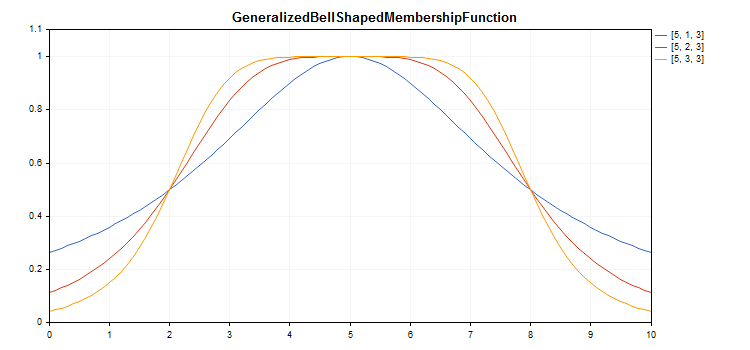CGeneralizedBellShapedMembershipFunction
Clase para la implementación de la función general de pertenencia en forma de campana con los parámetros A, B y C.
Descripción
La función generalizada de pertenencia en forma de campana es parecida por su forma a la de Gauss. En toda la zona de definición la función es suave y adopta valores diferentes a cero.

Un ejemplo de código para construir este gráfico se muestra más abajo.
Declaración
class CGeneralizedBellShapedMembershipFuncion : public IMembershipFunction |
Encabezamiento
#include <Math\Fuzzy\membershipfunction.mqh> |
Jerarquía de herenciaCGeneralizedBellShapedMembershipFunction |
Métodos de clase
Método de clase |
Descripción |
|---|---|
Retorna y establece el coeficiente de concentración de la función de pertenencia. |
|
Retorna y establece el coeficiente de inclinación de la función de pertenencia. |
|
Retorna y establece la coordenada del máximo de la función de pertenencia. |
|
Calcula el valor de la función de pertenenecia según el argumento indicado. |
//+------------------------------------------------------------------+
|